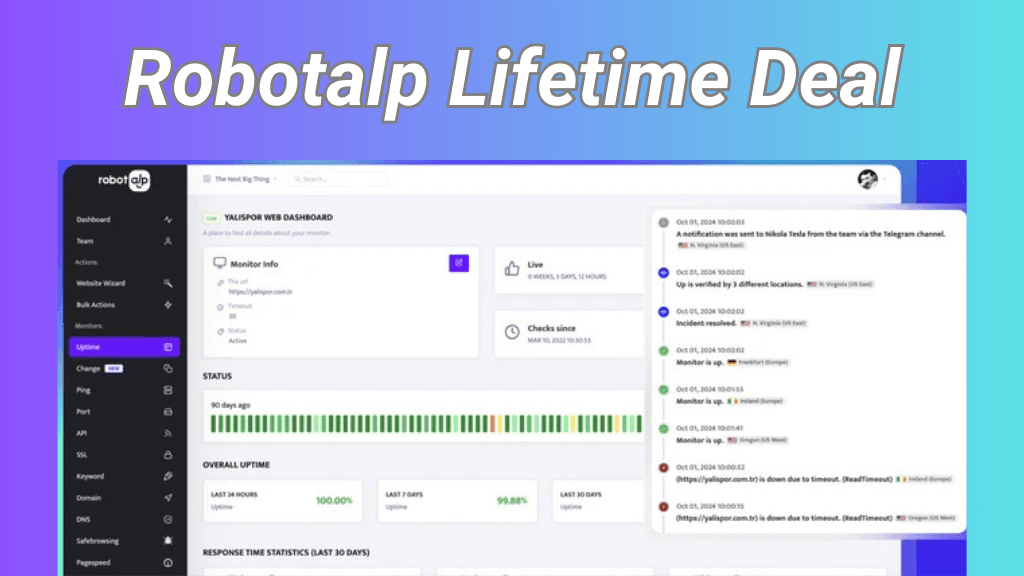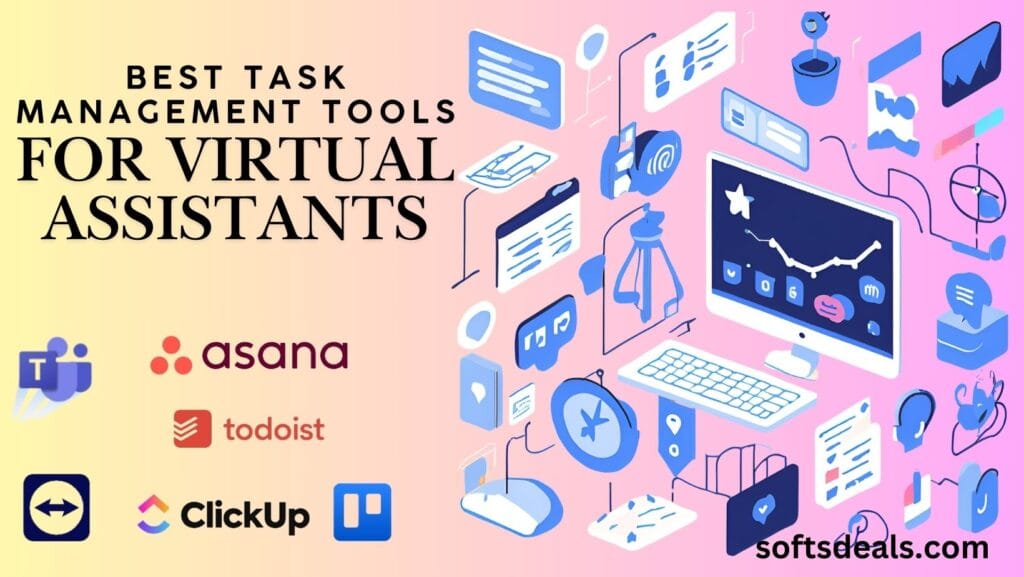The role of Employment Outlook on Virtual Assistants is becoming vital in today’s digital landscape. Many businesses now rely on them for various tasks.
The employment outlook for virtual assistants appears strong, with a growing trend towards remote work and the increasing need for flexible, cost-effective support solutions. Virtual assistants offer diverse skills, from administrative tasks to customer service, and they’re becoming integral to the smooth operation of many companies.
As we delve into the world of virtual assistance, it’s clear that this field is not just a fleeting trend but a staple in the evolving job market. The demand for virtual assistants is on the rise, driven by the shift towards online business operations and the emphasis on efficiency and specialization. With the ability to work from anywhere, virtual assistants are breaking geographical barriers, making it easier for employers to find the perfect match for their needs. This shift has significant implications for job seekers and employers alike, presenting new opportunities and challenges in the employment landscape. Whether you’re considering a career as a virtual assistant or looking to hire one, understanding the employment outlook is crucial in making informed decisions. Join us as we explore the current state and future prospects of virtual assistants in the workforce.
Current Demand For Virtual Assistants
The world of work is transforming, and virtual assistants (VAs) are at the forefront of this change. With businesses looking for cost-effective solutions and individuals seeking flexible work options, the demand for virtual assistants has soared. Let’s dive into the current trends and industries that are driving the need for virtual assistants, painting a picture of the employment outlook in this burgeoning field.
Market Growth Trends
The market for virtual assistants is witnessing an impressive uptrend. Several factors contribute to this growth:
- Technological advancements: With better tools for communication and collaboration, VAs can work more efficiently than ever.
- Remote work popularity: As remote work becomes the norm, businesses are more open to hiring VAs.
- Cost savings: Companies save on office space and resources when they opt for VAs.
- Focus on core tasks: By outsourcing routine tasks to VAs, businesses can concentrate on their main goals.
Statistics paint a clear picture of this upward trend. The table below highlights the projected growth:
| Year | Market Size | Growth Rate |
|---|---|---|
| 2021 | $2.6 billion | 4.5% |
| 2022 | $2.8 billion | 7.7% |
| 2023 | Projected Growth | Est. 10% |
These figures reflect a robust and expanding market for virtual assistants, signaling a bright future for those skilled in this area.
Industries Hiring Virtual Assistants
Virtual assistants are in demand across various sectors. The following industries are particularly keen on hiring VAs:
- Healthcare: For administrative tasks and patient follow-ups.
- Real Estate: To manage listings and client communication.
- Legal Services: For case research and documentation.
- IT and Tech: To support project management and data entry.
- E-commerce: For customer service and inventory management.
Entrepreneurs and small businesses also frequently seek the services of virtual assistants to handle daily operations. This trend is not limited to any one region; it is a global phenomenon. The demand is particularly high in North America, Europe, and Asia-Pacific regions where the gig economy is thriving. Virtual assistants are no longer an alternative; they have become an integral part of the modern workforce. This shift ensures a steady demand for virtual assistants across multiple industries, promising a strong employment outlook for the foreseeable future.

Skills Needed For Success
The role of virtual assistants (VAs) is quickly evolving. With companies embracing remote work, the demand for VAs is soaring. But what skills set successful virtual assistants apart? Let’s dive into the key competencies that help VAs thrive in this dynamic job market.
Technical Skills
Today’s virtual assistants need a robust set of technical skills to handle diverse tasks efficiently. Here are some essential capabilities:
- Data Management: Proficiency in handling data using tools like Microsoft Excel, Google Sheets, and database software is crucial.
- Communication Tools: Familiarity with platforms like Slack, Zoom, and email clients helps VAs stay connected with clients.
- Social Media Management: Skills in managing and scheduling posts using tools like Hootsuite or Buffer can be vital.
Beyond these, VAs should also understand basic SEO principles and content management systems like WordPress. A quick look at some additional technical skills includes:
| Technical Skill | Application |
|---|---|
| Graphic Design | Creating visual content using Canva or Adobe Creative Suite |
| Project Management | Organizing tasks and deadlines using Asana or Trello |
| Email Marketing | Running campaigns via Mailchimp or Constant Contact |
These technical abilities enable VAs to deliver quality work and handle complex projects with ease.
Soft Skills
While technical know-how is key, soft skills are the backbone of a VA’s success. Here’s what makes a VA stand out:
- Communication: Clear and concise interaction ensures smooth workflows.
- Time Management: Juggling multiple tasks effectively is non-negotiable.
- Problem-Solving: Navigating challenges with a cool head can save the day.
Building trust through reliability and confidentiality is also paramount for virtual assistants. Let’s expand on other soft skills:
| Soft Skill | Importance |
|---|---|
| Adaptability | Being flexible with tasks and schedules to accommodate client needs |
| Attention to Detail | Ensuring accuracy in all tasks to maintain high-quality work |
| Proactivity | Anticipating needs and taking initiative without constant direction |
Marrying these soft skills with technical expertise, virtual assistants can deliver exceptional service and maintain a competitive edge in the job market.
Types Of Virtual Assistant Roles
The world of work is changing. More people now work from home. This has made virtual assistant jobs more popular. These jobs let people help others from any place. There are many kinds of virtual assistant roles. Let’s look at two main types: Administrative Assistants and Specialized Roles.
Administrative Assistants
Administrative assistants do many tasks. They help keep things organized. They work with emails, calendars, and files. Think of them as helpers who make sure everything runs smoothly. Here are some things they do:
- Manage emails: They read, send, and organize emails.
- Handle appointments: They make sure schedules are set and remind you of meetings.
- File management: They keep all files in order. This makes finding things easy.
People in these roles need to be good with computers. They also need to know how to use office software. Many businesses need these helpers. This means there are many jobs in this area.
Specialized Roles
Some virtual assistants have special skills. They do more than just basic tasks. They might work in areas like marketing, writing, or web design. These roles need more training. But they also pay more. Here are some examples:
| Role | Skills Needed |
|---|---|
| Marketing Assistant | Social media, advertising, research |
| Content Writer | Writing, SEO, research |
| Web Designer | Design, coding, creativity |
These roles help businesses in specific ways. A marketing assistant can help sell products. A content writer can make websites interesting. A web designer can make websites look good. All these roles are important. They help businesses grow online.

Credit: virtualassistant.blog
Remote Work Opportunities
As businesses continue to evolve in the digital age, the role of virtual assistants (VAs) becomes more critical. The employment outlook for VAs shows a positive trend, driven by the surge in remote work opportunities. Companies across various industries now recognize the value of remote support services. This shift not only opens doors for flexible work options but also paves the way for a more diverse and global workforce.
Freelancing Vs. Full-time
The landscape of virtual assistance offers two primary career paths: freelancing and full-time positions. Each path presents unique benefits and challenges that cater to different work preferences and lifestyles.
- Freelancing: Offers flexibility and control over work hours and clients. Ideal for individuals seeking variety and autonomy.
- Full-time: Provides stability with a regular salary and often, company benefits. It suits those who prefer a consistent routine and deeper involvement with a single organization.
In the realm of virtual assistance, freelancers can connect with clients through various online platforms. They often juggle multiple projects, tailoring their services to meet diverse needs. On the other hand, full-time VAs typically work with a single employer, focusing on specific tasks and contributing to long-term goals.
| Aspect | Freelancing | Full-time |
|---|---|---|
| Work Schedule | Flexible | Fixed |
| Income Stability | Variable | Stable |
| Benefits | Limited | More likely to have benefits |
| Client Diversity | High | Low |
Global Job Market
The global job market for virtual assistants is vibrant and growing. The rise of remote work has made location less of a barrier, allowing VAs to offer services worldwide. This global reach benefits both businesses and assistants:
- Businesses: Gain access to a broader talent pool and can find VAs with specific skill sets, irrespective of geographical location.
- Virtual Assistants: Can tap into markets that offer competitive rates and have the freedom to work with international clients.
Key regions such as North America, Europe, and Asia are witnessing a significant demand for virtual support services. Language skills, cultural understanding, and specialization in certain fields can give VAs an edge in the global job market. It’s essential for VAs to stay updated with digital tools and communication technologies to remain competitive. The table below highlights some of the key regions and their demand for VAs:
| Region | Demand for VAs | Preferred Skills |
|---|---|---|
| North America | High | Customer service, marketing, admin support |
| Europe | Growing | Multiple languages, GDPR knowledge |
| Asia | Emerging | IT support, outsourcing services |
Challenges In The Field
The employment outlook for virtual assistants (VAs) is a hot topic in today’s gig economy. With businesses shifting towards remote operations, demand for VAs has soared. Yet, like any job market, this field comes with its challenges. Understanding these hurdles is key for anyone looking to thrive as a VA. Let’s explore some of the significant obstacles virtual assistants may encounter.
Competition Levels
With the rise of remote work, competition among virtual assistants has become fierce. More people are drawn to the flexibility and potential of VA roles, leading to a crowded marketplace. Here are some of the reasons why competition is high:
- Low Entry Barriers: Starting a VA business requires minimal setup, attracting a broad range of candidates.
- Global Talent Pool: Employers can hire VAs from anywhere, increasing the number of applicants.
- Diverse Skill Sets: VAs offer varied services, from administrative tasks to specialized technical support.
These factors mean that VAs must constantly improve their skills and market themselves effectively. A table comparing the key skills in demand may help VAs understand where to focus:
| Basic Skills | Advanced Skills |
|---|---|
| Email Management | SEO Optimization |
| Data Entry | Content Creation |
| Scheduling | Web Development |
Staying ahead of the competition involves not only honing these skills but also building a strong personal brand and networking effectively.
Job Security
Job security is a significant concern for virtual assistants. Unlike traditional roles, VAs often work on a freelance or contract basis. Here are some factors affecting job security:
- Contract Work: Many VAs are hired for short-term projects, leading to periods of no work.
- Client Dependence: A VA’s income may depend heavily on a few key clients.
- Economic Fluctuations: Economic downturns can reduce the demand for VA services.
To mitigate these risks, VAs can:
- Seek long-term contracts to ensure steady work.
- Diversify their client base to avoid over-reliance on a single source of income.
- Offer services that are in demand regardless of economic conditions, like customer support.
Building a reputation for reliability and quality work can also lead to referrals and repeat business, bolstering job security. In the end, VAs who adapt to market needs and cultivate a diverse skill set can navigate the challenges of job security more effectively.

Salary Expectations
The employment outlook for virtual assistants is bright. More companies value their help every day. Now, let’s talk about salary expectations. What can virtual assistants expect to earn? It varies. But we’ll break it down. Keep reading to learn about average pay rates and what affects earnings.
Average Pay Rates
The pay for virtual assistants can differ a lot. It depends on many things. Like skills, experience, and the job’s demands. Here’s a simple look at what they usually make:
- Entry-level: Starting out, virtual assistants can make around $10 to $15 an hour.
- With experience: After gaining experience, pay can jump to $20 to $30 an hour.
- Specialized skills: Virtual assistants with special skills, like social media or web design, can earn even more, sometimes up to $50 an hour.
Here’s a table to make it clearer:
| Level | Hourly Rate |
|---|---|
| Entry-level | $10-$15 |
| Experienced | $20-$30 |
| Specialized | Up to $50 |
Remember, these are just averages. Some earn more, some less.
Factors Affecting Earnings
What makes some virtual assistants earn more than others? Here are key factors:
- Skills and experience: More skills and experience can mean higher pay.
- Type of work: Some tasks pay more. Like web development or graphic design.
- Location: Virtual assistants in big cities or working for clients in high-paying areas might earn more.
- Hours: Working full-time or overtime can increase earnings.
- Client base: Having many clients or working with big companies can boost pay.
Also, remember that being a virtual assistant means you’re often self-employed. This means you must handle your own taxes and benefits. So, what you take home can be different from your gross pay.
In short, many things can affect how much you earn as a virtual assistant. But with the right skills and effort, the pay can be quite good.
Future Trends In Virtual Assistance
The job landscape for virtual assistants (VAs) is ever-changing, with new trends shaping the future of remote work. Virtual assistance, once a niche role, has blossomed into a vital part of the global workforce. As technology advances and businesses adapt to new ways of operating, the employment outlook for VAs looks bright with continuous growth anticipated. Understanding the future trends in virtual assistance is crucial for those looking to thrive in this evolving field.
Automation Impact
Automation is a key trend affecting the virtual assistant industry. With software becoming smarter, some tasks traditionally done by VAs are now automated. This change presents both challenges and opportunities:
- Repetitive Task Automation: Simple tasks like scheduling and data entry are increasingly managed by programs such as calendar apps and spreadsheets with complex macros. This shift means VAs need to adapt their skills.
- AI and Chatbots: Customer service roles are being supplemented by AI-powered chatbots, which can handle basic inquiries. However, VAs are still needed for more complex support tasks.
- Higher Value Services: As routine jobs get automated, VAs can focus on more strategic and creative tasks that require a human touch.
Here’s a glance at how automation influences VA tasks:
| Task Type | Pre-Automation | Post-Automation |
|---|---|---|
| Email Management | Manual sorting and replying | Use of email filters and AI tools for initial responses |
| Data Entry | Fully manual input | Automated data scraping and entry tools |
| Customer Support | Handled by VAs | Initial contact via chatbots, followed by human interaction for complex issues |
For VAs, staying ahead means learning to work with these new tools rather than against them.
Evolving Job Functions
As the role of virtual assistants becomes more integrated into business operations, their job functions are evolving:
- Specialized Skills: VAs are developing expertise in areas like digital marketing, graphic design, and web development to offer more value to clients.
- Project Management: Many VAs now manage projects, using tools like Trello and Asana to keep teams on track.
- Client Relationship Management: Building and maintaining client relationships is a growing part of the VA role, often using CRM software.
Here’s how job functions are changing:
| Old Function | New Function | Tools Used |
|---|---|---|
| Basic Admin Tasks | Specialized Administrative Services | Industry-specific software |
| One-off Tasks | Ongoing Project Management | Project Management Software |
| Customer Service | Client Relationship Management | CRM Platforms |
Adapting to these changes is vital for VAs aiming to stay relevant and in-demand in the future job market.
How To Get Started
With the rise of remote work, the demand for virtual assistants (VAs) continues to surge. Many businesses now recognize the value VAs bring to the table. They offer flexibility, reduce overhead costs, and provide a wide range of services. If you’re keen on joining this growing field, knowing how to get started is crucial. Let’s dive into the essential steps to launch your VA career.
Building A Portfolio
As a budding virtual assistant, a strong portfolio can set you apart. It’s your first chance to impress potential clients. Here’s how to craft a winning portfolio:
- Highlight Your Skills: List all the relevant skills you possess. Include everything from email management to social media savvy.
- Showcase Previous Work: If you have experience, display samples of your work. This could be anything from administrative tasks to creative projects.
- Testimonials: Include positive feedback from past employers or clients. Glowing recommendations can be persuasive.
- Personal Brand: Your portfolio should also reflect your personal brand. Make it look professional and ensure it aligns with the services you offer.
Remember, your portfolio is an evolving tool. Keep updating it as you gain more experience and skills.
Finding Clients
Finding clients is the next big step for any virtual assistant. Here are practical tips to help you land your first clients:
- Networking: Connect with others in your field. Join online forums, attend webinars, and engage in social media groups related to VA work.
- Job Boards: Check out job boards specific to virtual assistants. Sites like Upwork and Freelancer are great places to start.
- Direct Outreach: Don’t shy away from reaching out directly to businesses. Craft a professional email that outlines how your services can benefit them.
- Referrals: Ask friends, family, and professional contacts if they know anyone who could use a VA. A personal recommendation goes a long way.
Patience and persistence are key when finding clients. Stay dedicated, and your client list will grow.
Frequently Asked Questions
What Is A Virtual Assistant’s Role?
A virtual assistant (VA) provides administrative, technical, or creative assistance from a remote location. They handle tasks like email management, scheduling, customer support, and social media management. This flexibility allows businesses to save on operational costs while ensuring tasks are completed efficiently.
How Fast Is The Va Industry Growing?
The VA industry is experiencing rapid growth due to increasing demand for remote work solutions. With advancements in technology and the global shift towards virtual offices, the sector is expected to expand further, offering more opportunities for both aspiring VAs and businesses looking to outsource tasks.
What Skills Are Essential For A Virtual Assistant?
Essential skills for a virtual assistant include strong communication, time management tools, proficiency in digital tools (like Microsoft Office, Google Workspace), and social media platforms. Being organized and having the ability to work independently are also crucial. Specialized skills, like graphic design or web development, can increase job prospects.
Can Virtual Assistants Work Full-time?
Yes, virtual assistants can work full-time, although many choose flexible or part-time schedules. The nature of VA work allows for diverse working arrangements, including project-based, hourly, or retainer contracts, catering to both the assistant’s and the employer’s needs.
Conclusion
The future for virtual assistants looks bright. Demand is climbing steadily. Companies recognize the value they bring. Cost savings and efficiency are key benefits. Remote work trends play a huge role. Virtual assistants fit perfectly into this new work model.
They offer skills that cross many industries. This adaptability boosts their employment prospects. Job seekers should consider this growing field. Virtual assistant roles promise a dynamic and expanding career path. Embrace the opportunity. The outlook is promising.












